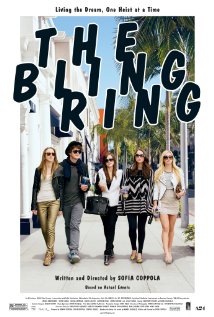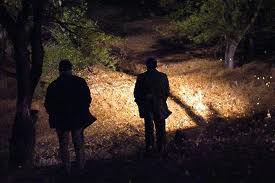 The Bling Ring/2013/American Zoetrope, et al/87 min.
The Bling Ring/2013/American Zoetrope, et al/87 min.
Writer/director Sofia Coppola (“The Virgin Suicides,” “Lost in Translation,” “Marie Antoinette,” “Somewhere”) has a knack for creating richly textured worlds, capturing the precise look of a place, feeling of a moment and mood of the characters.
In her latest film, “The Bling Ring,” a noirish tale based on real events, the milieu she so deftly depicts is one she presumably knows pretty well from her own experience – a chapter of high school for a group of five privileged kids from suburban Los Angeles. This clique, however, has an unusual gambit for getting a high – they like to steal stuff from celebrities.
These primp-prowl-and-pilfer kids from Calabasas made international headlines in 2009 after breaking into homes and absconding with more than $3 million in jewelry, clothes and accessories from celebrities including Paris Hilton (who appears in the film), Lindsay Lohan, Orlando Bloom, Rachel Bilson and Audrina Patridge. The movie is a fictionalized version of a Vanity Fair feature story (now a book) by Nancy Jo Sales.
After tracking their targets’ whereabouts via gossip and news sites, then finding their addresses on search engines, the gorgeous “gang” nonchalantly sets about quietly letting themselves into these stylish residences, snooping around the celebs’ red-carpet-ready stuff and making off with whatever catches their eyes. Oh and then flaunting their swag, glorious swag, and posting about it on Facebook.
These stunningly self-absorbed Angelenos – played by Emma Watson, Israel Broussard, Claire Julien, Taissa Farmiga and Katie Chang as the brazen ringleader – are observed more than they are judged. Their aberrant behavior, it appears, is fueled by a near-lethal cocktail of hyper-materialism, rampant narcissism, obsession with celebrity (real and fake), hollow spirituality and social media, not to mention actual booze and drugs.
And that constant of high-school angst: a hunger for popularity, attention and belonging. “In ‘The Bling Ring,’ the kids are trying to figure out their identity. I could understand that age and wanting to be part of a group,” said Coppola at a recent event at the Aero Theatre in Santa Monica. “I like stories about people in transition or figuring out their place. I like stories about internal struggle.”
“The Bling Ring,” starts out like a B crime movie – crickets breaking the silence of a peaceful night just before a sleek, secluded home is burgled – but soon sheds any inkling of a low-budget vibe. We are immediately immersed in what feels like a glossy, baffling and fascinating game. It’s hard not to indulge your inner-voyeur. [Read more…]













From FNB readers